Review: DJI Phantom 3 Professional iOS-connected drone with 4K ultra-HD camera
DJI Phantom 3
5.0 / 5The best has gotten even better with DJI's new Phantom 3 Professional, a drone that captures stunning, super-smooth 4K video from the skies. But it's the new controller with Lightning cable support, as well as a revamped iOS app, that truly bring this accessory to new heights.
The new Phantom lineup
The new Phantom 3 Professional Quadcopter features a gimbal-attached camera that captures 4K video at 30 frames per second. The device also boasts improved flying time of up to 23 minutes, and includes a vision sensor that allows for safe indoor flight.
The Phantom 3 Professional is the new high end of DJI's Phantom lineup, joined by the mid-level Phantom 3 Advanced and the low-end Phantom 3 Standard.
Priced at $1,259, the main selling point of the Professional model is the 4K camera. The mid-range Advanced drone is identical in all ways, except it has a gimbal-attached camera that captures 1080p video at 60 frames per second for $999.
Finally, the just-announced Phantom 3 Standard captures 1080p video at 30 frames per second, but it lacks the improved controller found with the Professional and Advanced models. It also does not have an indoor flight sensor and is priced at $799.
Familiar design, upgraded internals
Externally, the Phantom 3 lineup looks largely like all of the other Phantom models that have come before it. In terms of use and controls, it's a familiar and comfortable experience.
As we've noted in our reviews of previous Phantom models, DJI's drone is an incredible flying machine. With integrated GPS that allows for position holding, the Phantom 3 is easy and fun to fly, and enables users to capture stunning aerial footage.
Like its predecessors, the Phantom 3 Professional includes user-replaceable propellers that are easy to both attach and remove. The unit comes with a spare set of four additional propellers, as in the event of a crash, they are the first things that will break.
The Phantom 3 Professional also relies on the exact same "smart" battery that previous Phantoms have used. So if you own a previous model and want to keep your battery as a spare, it will work fine here.
Internally, DJI has beefed up some of the components. In addition to the vision sensor for indoor flight, which was borrowed from its high-end Inspire 1 drone, the Phantom 3 also has more efficient motors that allow for a slightly longer flight time. It also has a faster flight speed of 16 meters per second.
We do have one small knock against DJI for its Phantom 3 Professional: Inexplicably, the drone does not ship with a lens cap to protect its 4K camera. We would hope that the company begins shipping the device with a simple, cheap lens cap soon.
Controller overhaul
While the drone itself looks largely the same, its physical controller has received a major overhaul. While we liked the previous DJI controller, the new design for the Professional and Advanced models is a welcome upgrade with numerous improvements.
Up top, the clip is much larger and more robust, and was able to securely and easily hold our iPad Air 2 in place. That means the live view from the Phantom 3 Professional was more clear to see than on a smaller iPhone display.
A pair of extending arms on the clip also allow for smaller devices, so users who prefer to rely on their iPhone for live view can continue to do so.
The sides and back of the controller have been outfitted with rubberized comfortable grips. And there are hardware buttons that allow for recording and bookmarking footage, making it so the user doesn't need to take their fingers off the flight sticks to interact with their iPhone or iPad.
The back of the controller features a full-size USB port where users can plug in their own Lightning cable. This is a major improvement from previous models, as well as the low-end Phantom 3 Standard, all of which require users to connect to a broadcasted Wi-Fi network to stream footage.
With the new controller, users must simply plug their iPhone or iPad into the controller via a Lightning cable and launch the DJI app, and they're good to go. Messing around with Wi-Fi connections is no longer necessary to get started, and it's a major improvement.
A new app, too
All of this ties in with DJI's new "Lightbridge" technology, which allows for live app-based monitoring of the drone's camera from a connected iPhone or iPad. DJI says the Phantom 3 series enables 720p-quality video monitoring from a line-of-sight range of 1.2 miles.
While we didn't let our test drone get quite that far away from us, we had absolutely zero issues with the live video streaming functionality. The connection between the drone's 4K camera and our iPad Air 2 remained rock solid and allowed for a clear view of exactly what we were capturing.
DJI's revamped app also includes a live map that shows off the drone's location, and it also includes flight logs that show a history of where your Phantom 3 has been. The company has even included a new flight simulator app that can help users practice without having to take to the skies just yet.
And when users do take flight, they can enable a beginner mode that limits the top speed and distance of the device. There's also an auto-return home feature, and users can even pre-plot the route for their drone's flight, allowing it to fly autonomously without any need for the flight sticks.
The revamped hardware and software combination also offers new features like live high-definition streaming video to YouTube, and instant editing of clips. While features such as this have no practical application for us, we can see where some professionals would find them greatly valuable.
Conclusion
For all of the bells and whistles and new features, in the end it's all about the footage that the Phantom 3 Professional is capable of capturing.
Simply put, the Phantom 3 Professional's ease of use combined with its super-smooth, ultra-high-resolution 4K video camera excel in every way.
If you're on the market for a consumer-level high-end drone, DJI is the standard bearer. The only question is: Which model should you buy?
We think most "prosumer" users would be happy with the $999 Phantom 3 Advanced. It's identical to the Phantom 3 Professional in every way with the exception of the high-end model's 4K camera.
Considering most people don't even own a screen capable of viewing 4K video content, most users would be content with the 1080p-resolution, 60-frames-per-second quality of the Phantom 3 Advanced.
Either way, we don't think you can go wrong. The Phantom 3 Professional is the best consumer-focused DJI drone we've tested to date, offering a complete package at prices more competitive than ever before.
Score: 5 out of 5
Pros
- For $1,259, users get an incredibly capable flying 4K video camera
- The new controller and its support for Apple's Lightning connector is a major improvement
- Improvements to DJI's iOS app offer even more control
- Longer flight time, faster, and still compatible with the same "smart battery"
Con
- Come on, DJI, ship it with a cheap plastic lens cap
Where to buy
The Phantom 3 Professional Quadcopter is available from AppleInsider partner B&H with free expedited shipping for $1,259. It includes a 16-gigabyte micro SD card.
 Neil Hughes
Neil Hughes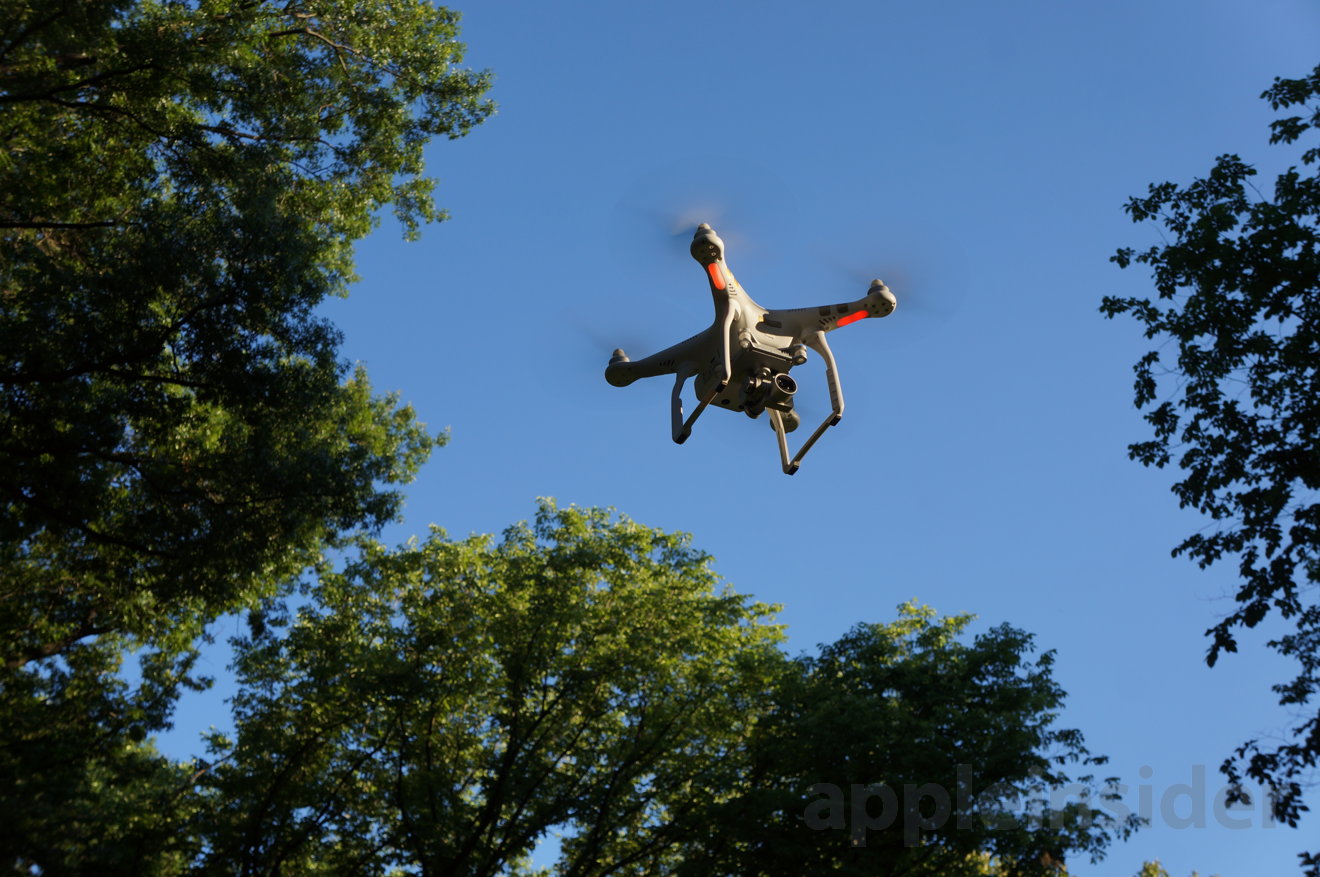
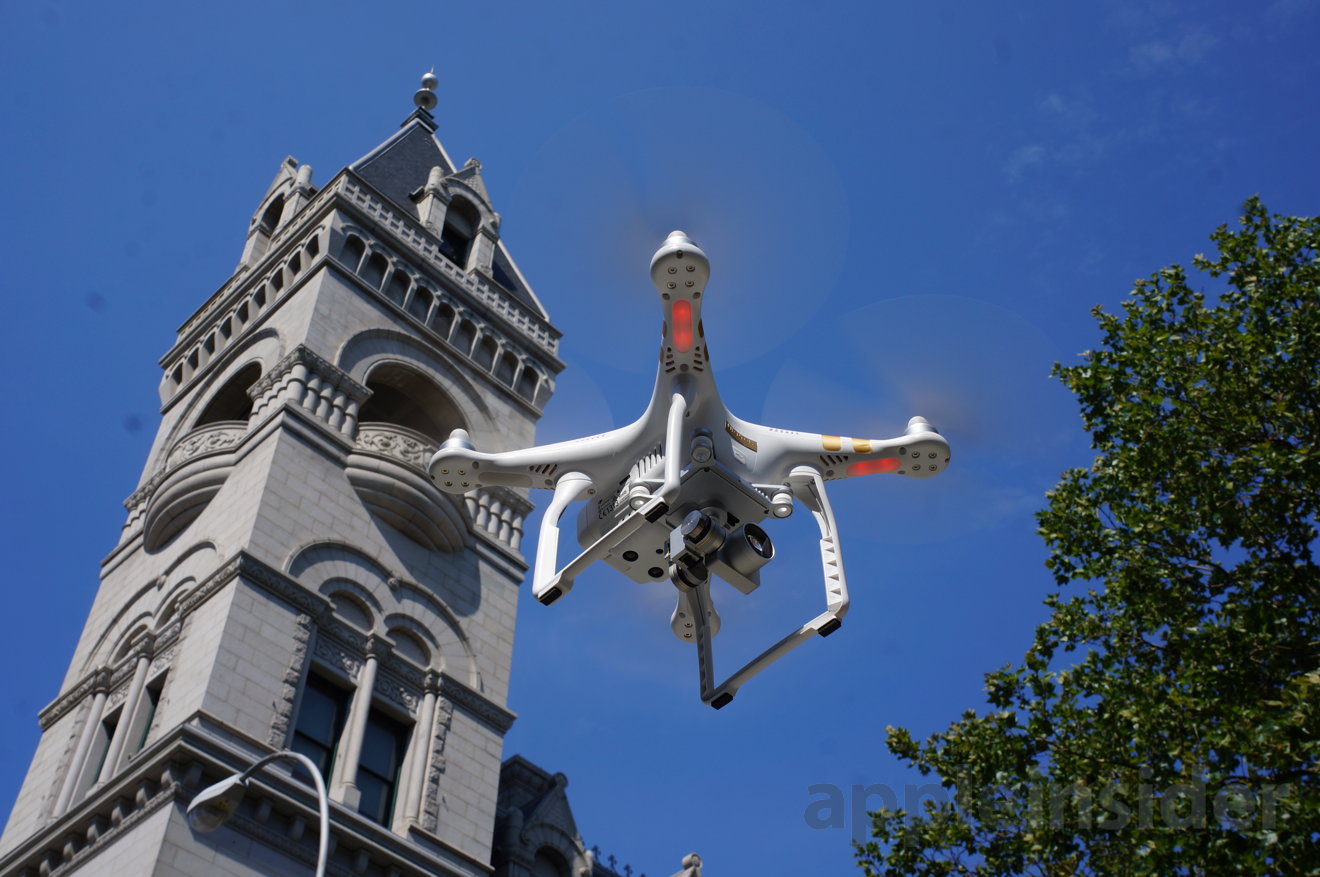
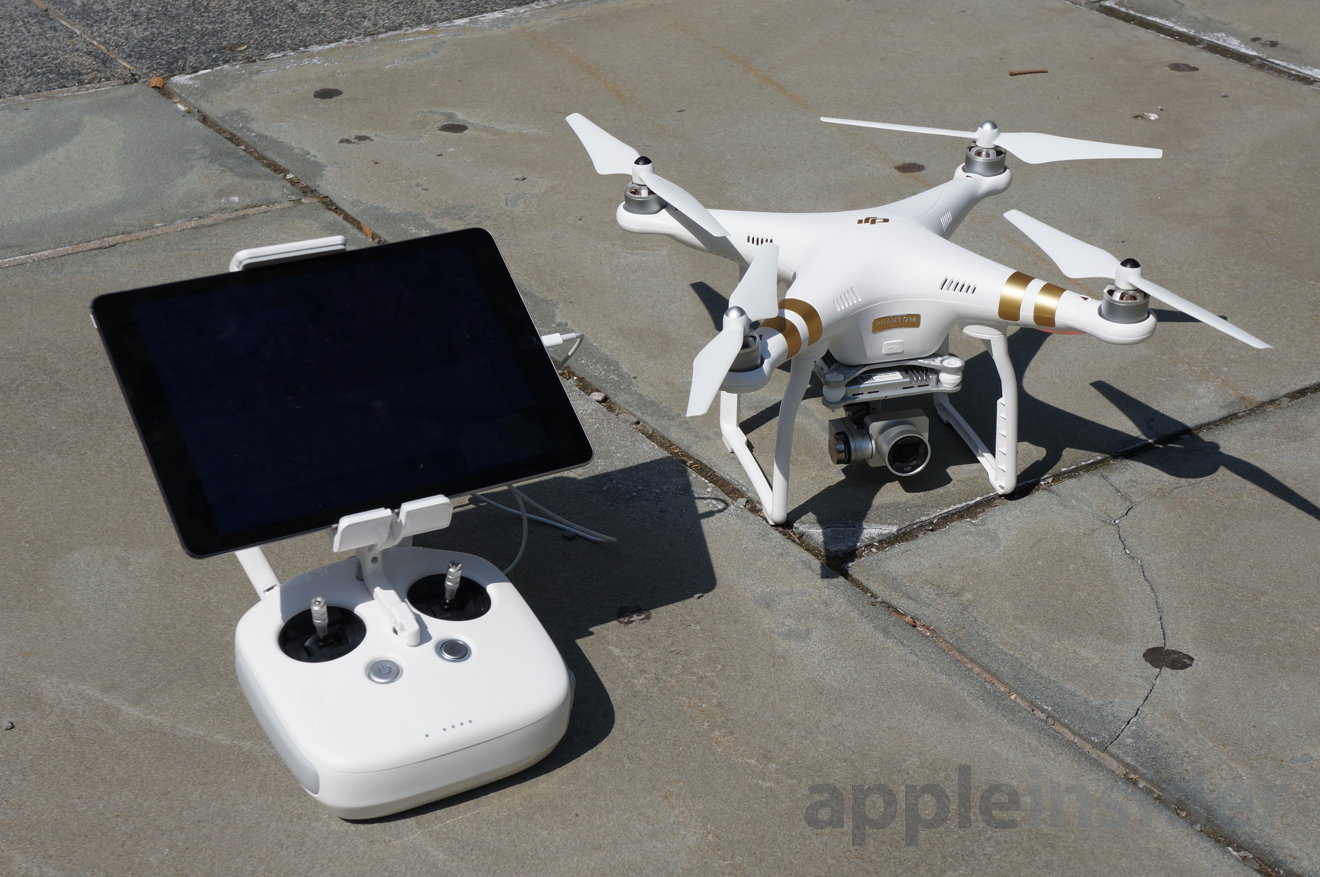
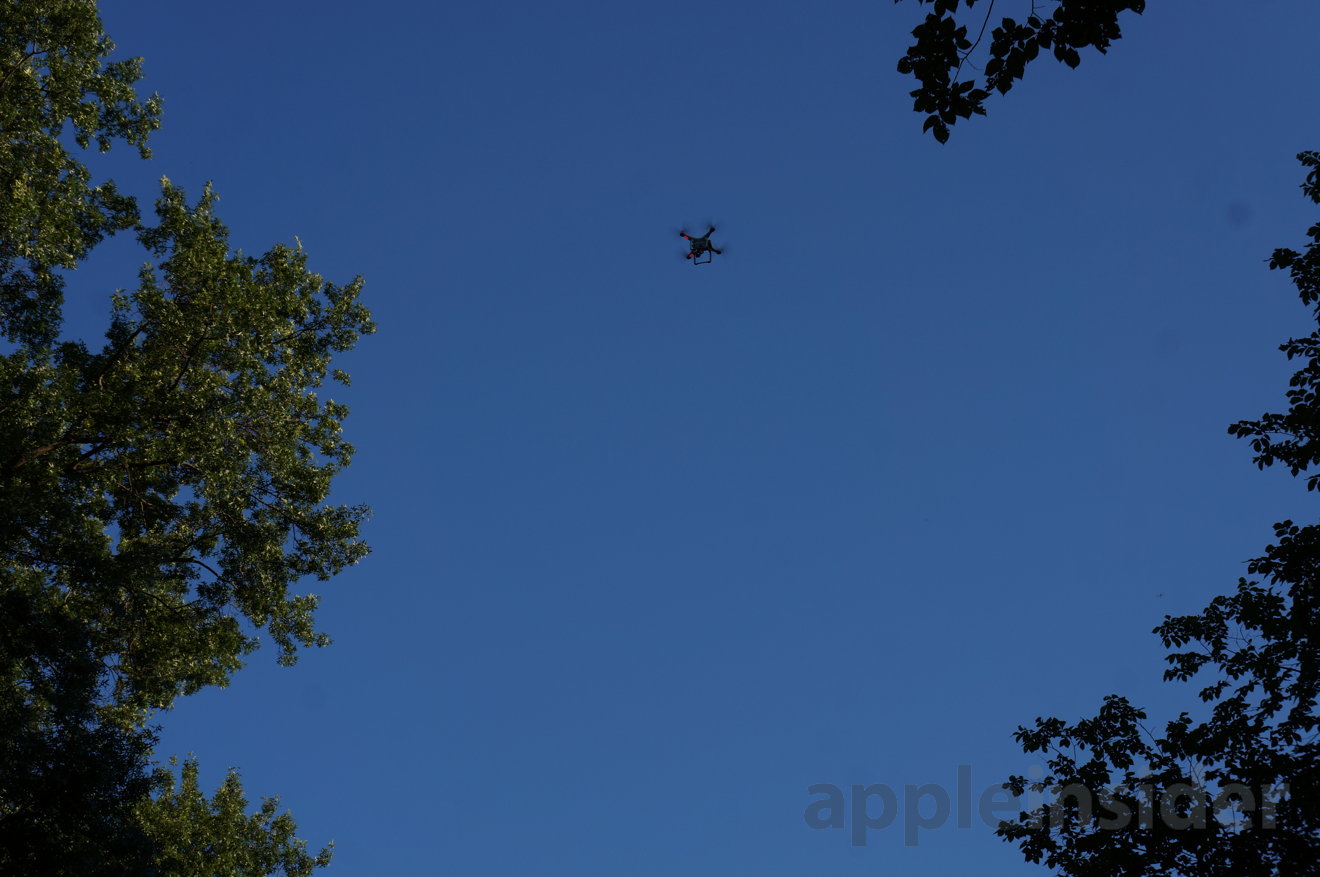

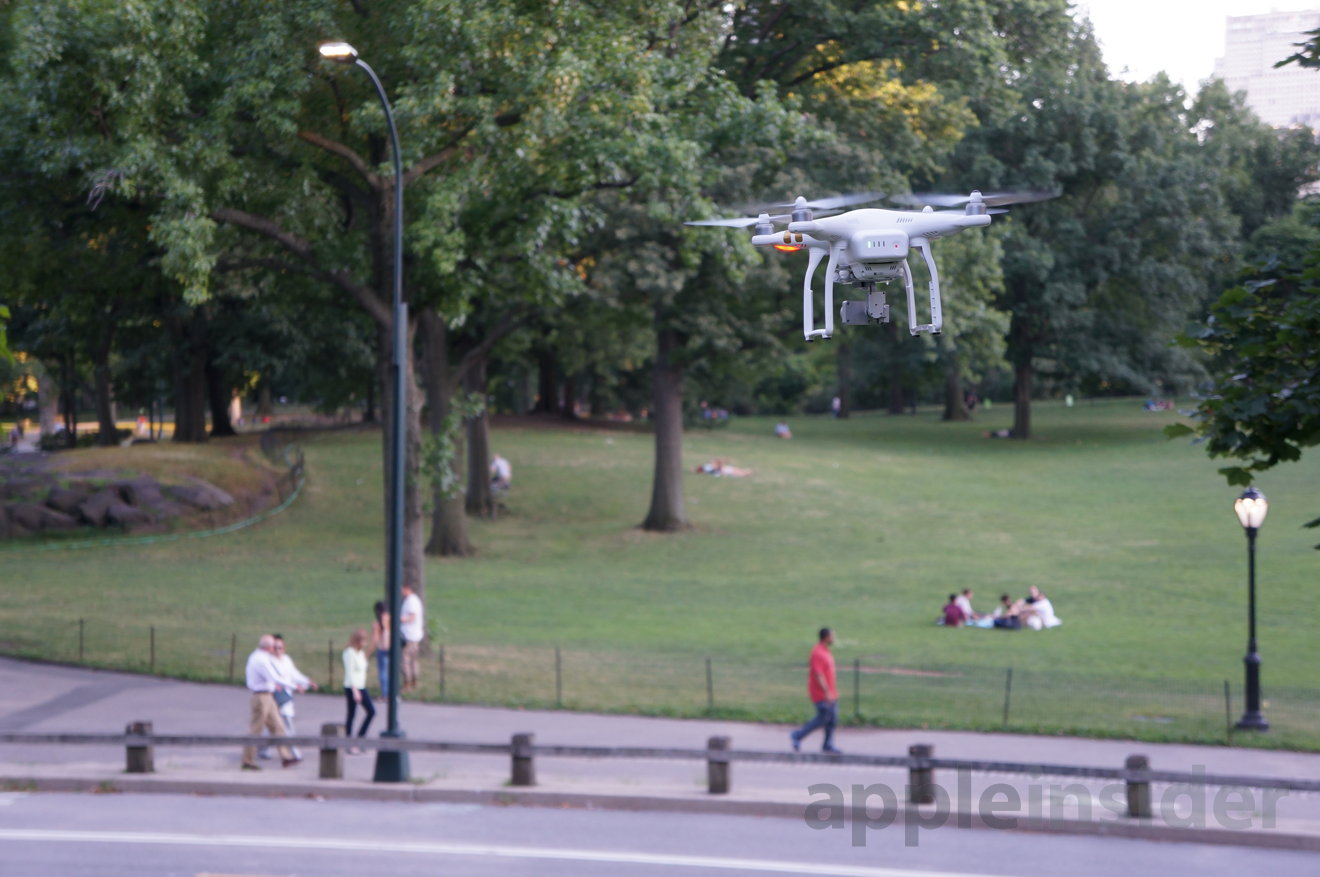
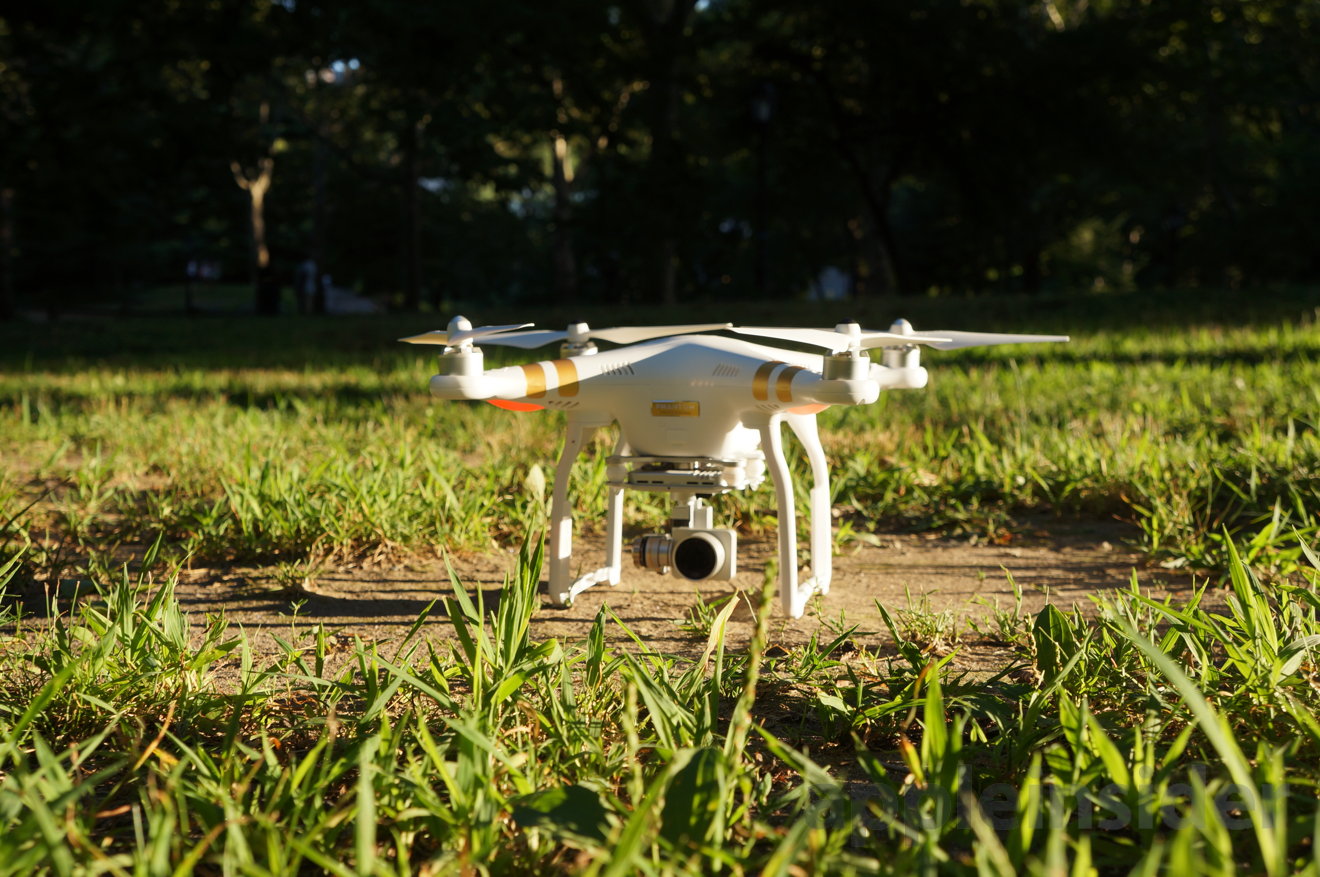


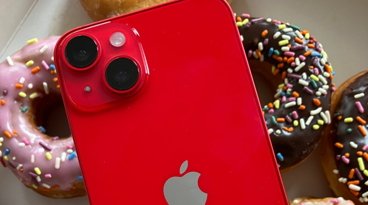



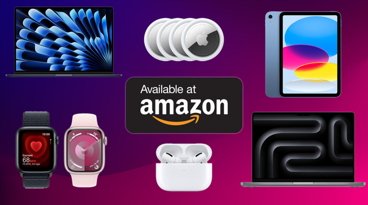





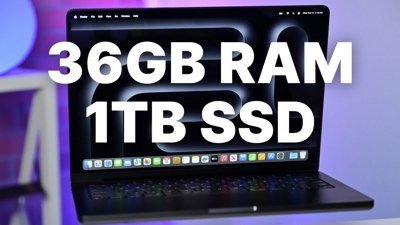
 Christine McKee
Christine McKee
 Malcolm Owen
Malcolm Owen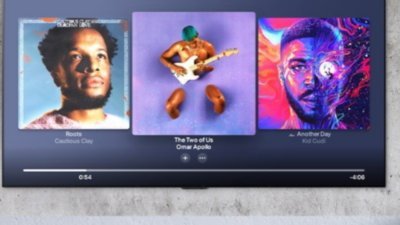
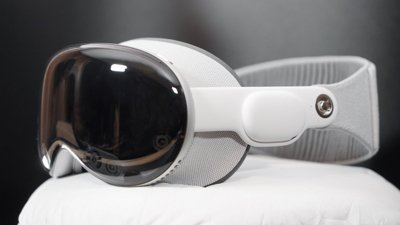
 William Gallagher
William Gallagher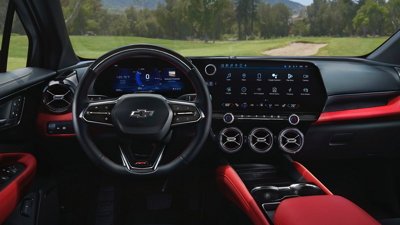
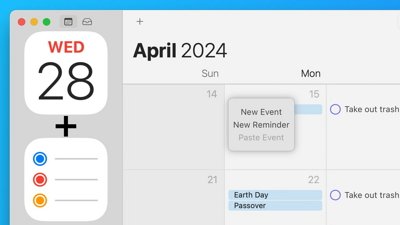
 Marko Zivkovic
Marko Zivkovic

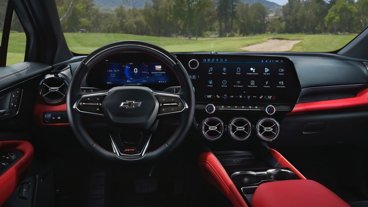
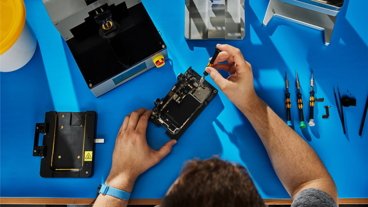







19 Comments
Did anyone else notice the horrible motion depiction @ 4k? Renders it unusable in my opinion. Or is this just the youtube encoding maybe?
This is not true, you can not use any older phantom batteries on the phantom 3.... "The Phantom 3 Professional also relies on the exact same "smart" battery that previous Phantoms have used. So if you own a previous model and want to keep your battery as a spare, it will work fine here."
The Phantom 3 Pro also has a 100w battery charger that charges way faster than the 57w Phantom 3 Advanced charger.
Know that you can be fined and even arrested for operating a drone in cities. You need a license and insurance - rightfully so. Last thing you want is your drone malfunctioning, killing someone on the ground. Also, note to the AppleInsider drone flying video-editor: your music selection doesn't make ANY sense. At least try to use the music creatively (or upload without music). Edit: As Zoetmb correctly pointed out, government regulations differ per territory. I know regulations in Germany and The Netherlands - they already have 'drone laws' in place, somewhat similar to existing aviation laws.
Actually, most places don't have specific regulations/laws about drones yet. In some cities, they can't be used near airports or they can't fly about 200 feet, but that's about it. I think regulations/laws are coming because people are so paranoid about the drones. While I wouldn't be necessarily opposed to licensing/insurance in places that have large populations, as long as the licensing is simple and inexpensive, there's not much yet.
But I'm amazed that using it in Central Park didn't attract the police who rightly or wrongly, would have stopped them from using it. Many police in NYC don't know the law and think you need a permit to shoot and separate permits to shoot in Central Park. You don't need a permit for any shoot for which you're not setting up heavy lighting and grip equipment. I walk around with a document issued by the police department that indicates that people are permitted to shoot anywhere in NYC. Drones are another matter.
If they haven't already, I bet some wedding photographers will start using these to get those sweeping shots or the bridal party in a park. Once one starts using them, they'll all want to use them.